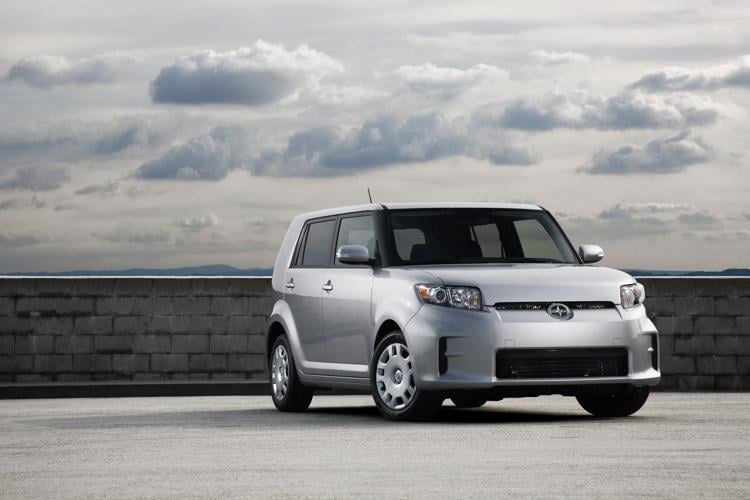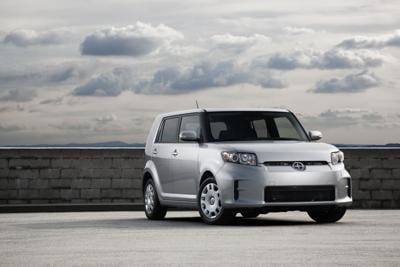Somewhere there’s a Porsche 911 adorned with a bumper sticker that reads: “My other car is a Kia Forte.”
Just kidding. Inexpensive cars rarely get our attention and adoration. Owners don’t really boast about them, and they’re often parked on the street, not in a choice spot on the driveway.
But times are changing.
Given the present economic uncertainty, consumers are thinking twice about big expenditures. New cars continue to sell, albeit at a slower pace. The market is losing momentum after a strong start to the year, wrote Andrew King, managing partner of DesRosiers Automotive Consultants, in a business update.
For those that need a durable car to get to work — hey, the office mandate is real — buying used makes infinite sense right now. But popular cars are pricey: a 2014 Toyota Corolla can still fetch $15,000 on used-car lots (not far off the base sticker price 11 years ago).
There are sensible commuter cars you can buy today for less than $10,000. They may have high mileage — cars today can easily attain 350,000 km and more — yet these vehicles deliver reliability and bang-for-the-buck in spades.
Here are our picks:
2011-15 Scion xB: Remember Scion? It was Toyota’s hipster brand for disaffected millennials who had a licence, but didn’t know what to drive. Scion didn’t come to Canada until 2011. When it did, it was offering a lineup of tidy front-drive econoboxes with unconventional styling, draped over reliable Toyota drivetrains that power Corollas and Camrys.
One of the best buys is the Scion xB with a design inspired by the toaster in your kitchen. Its boxy profile provides an astonishing amount of room for a wagon that’s easy to drive and park. The high roofline yields excellent headroom front and back, and rear-seat passengers aren’t relegated to a cramped penalty box.
The xB is powered by the same 158-horsepower, 2.4-litre, four-cylinder engine found in the Camry, mated to either a five-speed manual gearbox or four-speed automatic. Fuel economy is not quite miserly, but the ride is decent and the steering is accurate. Other Scion models to consider: the subcompact xD with its Corolla mechanicals and the sporty tC coupe. They’re thin on the ground, but all are worthy finds.
2014-15 Mazda 3: Redesigned for 2014, the Mazda 3 is a driver’s car that is well above the econobox class and sells for a considerable discount compared to the Honda Civic. Available as a four-door sedan and five-door hatchback, the Mazda 3 is a sporty little number that delivers a lot of satisfaction, although the well-appointed cabin does feel a little claustrophobic.
There are two engines to choose from: a 155-hp, 2.0-L four cylinder, or a 184-hp, 2.5-L four working through a manual or automatic transmission, both with six gears. Its all-new chassis and suspension provided a more refined, substantial ride without making the 3 feel any less athletic during quick drives on back roads.
Reliability is very good. The most common complaint has to do with fast-wearing brakes, which isn’t helped by a rust issue that’s involved a recall. Infotainment displays may malfunction and reboot often, and software updates don’t always restore order. There are complaints about easily chipped paint and windshields, and air-conditioners that check out early.
2009-2013 Acura TSX: Smaller and sportier than the American-scaled Honda Accord, Acura’s TSX features an upscale interior, lots of standard gear and, with its Euro-spec suspension, lively road manners. Its agile handling recalls one of the best front-wheel-drive cars ever made, the Honda Prelude, and the TSX is one Japanese car that’s actually assembled in Japan.
Honda’s K-series 201-hp, 2.4-L, four-cylinder engine loves to rev, yet it avoids gas stations. The slick six-speed manual gearbox is one of the best on the market, and there’s a five-speed automatic available, too. In response to complaints that the TSX’s four-cylinder was short of torque, Acura made its 280-hp, 3.5-L V6 engine available starting in 2010, coupled exclusively with the automatic transmission.
Craving durability? Consider that the TSX achieved Consumer Reports’ highest possible reliability rating every year between 2009 and 2014. The few mechanical complaints mention malfunctioning power-steering units, short-lived brake pads and batteries and blown stereo speakers. Do inspect for rust along the rocker panels!
2010-11 Honda CR-V: We’d be remiss if we didn’t include a couple of crossover SUVs, especially the immensely popular Honda’s CR-V. Unfortunately, we have to go back to 2010 to find a used CR-V that meets our intended budget. Regardless of the model year, every CR-V has a roomy, inviting cabin that can coddle five occupants with its tall seating and great sightlines.
The 2010 and ’11 models feature a revised 2.4-L, four-cylinder engine making 180 hp and 161 pounds-feet of torque — a welcome improvement. A five-speed automatic and front-wheel drive were standard, while all-wheel drive was a popular option. The CR-V sets itself apart with nimble handling, sharp steering and effective braking performance. If there’s a downside, wind and road noise can be intrusive.
The CR-V is the epitome of reliability. Don’t shy away from high-mileage examples (but remember to inspect before you buy)! The AWD rear differential can become noisy or fail outright, so look for evidence that regular maintenance was done. The air-conditioning compressor is also fragile, and door locks may malfunction.
2011-14 Mitsubishi RVR: Addicted to extreme couponing, Mitsubishi Motors has a habit of creating new products on a shoestring budget. It took its Outlander sport-ute and trimmed 37 centimetres of sheet metal and 180 kg of mass to create the RVR crossover. It recycled the Lancer’s 2.0-L, DOHC, four-cylinder, rated at 148 hp, mated to a five-speed manual transmission or a continuously variable (CVT) automatic. The base model was front-wheel drive; all-wheel drive came bundled with the CVT.
The RVR is a value-packed and reliable buy — as long as you’re not in a hurry to get anywhere. Two litres is not enough motor to move the RVR with much authority, although owners praised its relaxed ride, precise steering, quiet operation and AWD traction. Later models offered a larger 168-hp, 2.4-L, four-banger as an option.
Best of all, there are scant mechanical lapses. The most common are a finicky tire-pressure-monitoring system, as well as faulty oxygen sensors and premature brake wear. The front lower control arms can corrode; dealers will inspect the cross members and either apply a sealing anti-corrosion agent or replace the components.
The best thing about buying a well-used vehicle? It comes pre-scratched and sometimes pre-dinged. Liberated from the fear of the first blemish, you can enjoy ownership of your new second-hand car. Â





























To join the conversation set a first and last name in your user profile.
Sign in or register for free to join the Conversation